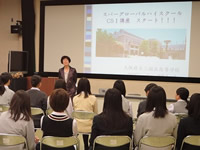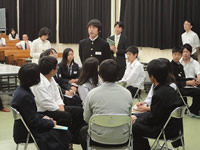 |
|
|---|---|
 |
|
![]()
Super Global High School (SGH) Activity Report
February 6, 2016
2nd-year presentations
Second-year SGH presentations took place on Saturday, February 6, 2016, during which 2nd-year Mikunigaoka SGH students presented their six BoP business plans. The six plans were further developed since being presented for the 3rd High School Business Plan Grand Prix in October 2015. Mr. Shunji Nagai from Japan Finance Corporation was invited to the event. The presentation content and delivery were reviewed by SGH Management Guidance Committee members and other guests for the presentation of awards.
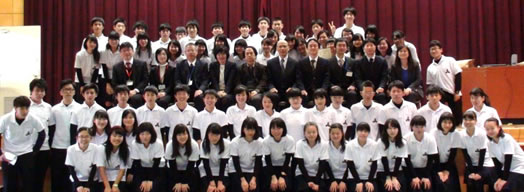
Presentation topics
1. Bananice: Turning Bananas into Business
Team Sankyu Peso
First-place winner
“Bananice” is a mash-up of “banana,” “nice” and “ice,” and means “banana ice cream.” The BoP plan involves buying ice cream ingredients—primarily bananas and coconuts—from small-scale growers in the Philippines, processing them locally (including producing ice cream cups from stems otherwise discarded after the fruits had been harvested), and exporting the end products to Japan, where they will be sold.
2. Japanese Tea in the Philippines: Promoting the Culture of Enjoying Green Tea
Team W Island Tea
Second-place winner
The BoP business plan involves growing, processing, and selling green tea in the Philippines. Sales will take place at stores dedicated to green tea, where the product line-up and décor will be themed on Japan. Goals are to promote green tea drinking in the Philippines, and promote the active employment of women.
3. Coconut Dentifrice: Saving Philippine Teeth with Japanese-style Tooth Brushing
Team C&C
Second-place winner
The BoP business plan involves producing organic toothpaste from Philippine coconuts. The plan can be expected to provide economic support to jobless and/or low-income people by providing stable incomes to coconut producers, and by creating new manufacturing jobs. The plan also seeks to contribute to the improvement of dental hygiene by promoting correct tooth brushing.
4. Japatern Umbrellas
Team JPT
The BoP business plan involves making paper out of banana leaves and stems, which are otherwise discarded by small-scale banana producers in the Philippines, and using the banana paper to make affordably-priced, well-designed Japanese umbrellas for marketing in Japan, thereby contributing to new job creation in the Philippines.
5. Cocodress
Team Cocodress
Focusing on the problem of poverty among coconut growers in the Philippines, the BoP business plan proposes the production and marketing of coconut-derived salad dressing. Since the coconut is a specialty of the Philippines well-loved by its people, the plan proposes marketing the salad dressing in the Philippines, as well as in Japan, a country with a large population of health-conscious consumers. The product will be sold at brick-and-mortar as well as online stores. Coconut producers can expect extra income by producing the salad dressing, potentially alleviating the problem of poverty.
6. Japinoy Education
Team Koresupo!
This BoP business plan proposes temporary staffing to solve job shortages in the Philippines, where the population is growing, and labor shortages in Japan, where the population is shrinking.
(This team was not considered for awards, because it proceeded to the final of the High School Business Plan Grand Prix as one of the country’s ten finalists.)
The presentations given by 2nd-year students were excellent, with careful thought given to their structures and slides to ensure clarity. Actual product samples like the toothpaste and umbrella were also presented to the judges to aid understanding, which was very thoroughgoing. The teams entered their plans to the High School Business Grand Prix in October 2015. Five of the six teams made it to the top 100, but instead of being satisfied with their achievements, the teams refined and developed their plans further for this presentation event by visiting research institutes for study, and/or visiting companies for advice. The students’ progress over the past two years was amply demonstrated by their energetic presentations, and by their earnest responses to questions. In May 2016, the students will translate their proposals into English and then present them in front of overseas students studying in Japan. All of us involved look forward to the further progress of our inaugural SGH students.
Super Global High School (SGH) Activity Report
1st-year presentations (February 23, 2016)
First-year presentations took place on Tuesday, February 23, 2016 at Mikunigaoka High School to present the fruits of studies conducted over the previous year. Presentations were given by two student teams: the Marylhurst Team, scheduled to travel to Portland, Oregon in March; and the Nishimoto Team, scheduled to travel to the Philippines in August. Topics were as follows:
1. Nishimoto Team
1) Welcome to Sakai!
2) Intern de Return: Solving Daycare Shortage
3) Haken de Hakken: Let Us Find Your Job
2. Marylhurst Team
1) Biodiesel
2) City Planning
3) Green Building
4) Waste Disposal
5) Eco-shuttleResearch conducted by the Nishimoto Team demonstrated accomplishment uncharacteristic of 1st-year students. Despite tackling, perhaps ambitiously, the very current issues of Sakai’s revitalization and tourism promotion, daycare shortage, and greater participation of women in society, they managed to clearly communicate their research outcomes in a well-organized manner, successfully employing a hypothesis, verification, and a proposal. Most impressively, they substantiated their statements by conducting proper interviews with various facilities, corporations, university faculty, and others. One of the groups even provided an income and expenditure plan, which was surprisingly advanced for 1st-year students. We very much look forward to their BoP plans next year.
The Marylhurst Team gave their presentations in English. This year’s 1st-year students have really good English skills, and even students who had experienced difficulty in November were speaking fluently this time. Their topics covered Portland’s environmental policies and urban planning. At this stage they have not yet conducted field work, hence their investigations are not as in-depth as the ones conducted by the Nishimoto Team, but during the field work expected in Portland in March, the students are looking to study in greater depth the environmental conservation and urban planning programs of the City of Portland, which are reputedly top-class in the United States.
All of the students demonstrated exceptional presentation skills, possibly because they have learned from watching the 2nd-year presentations. Their presentations were organized in a manner that was very easy to understand, true to Mr. Daigo Higashi’s rule of giving center stage to the audience. We look forward to the future progress of these very bright second-batch SGH students.
Super Global High School (SGH) Activity Report
January 10, 2016
Mikunigaoka Students Compete in Final Round of High School Business Plan Grand Prix
The final of the 3rd High School Business Plan Grand Prix hosted by Japan Finance Corporation was held at the University of Tokyo on Sunday, January 10, 2016. Team Koresupo! formed by 2nd-year Mikunigaoka SGH students was among the ten national finalists, and competed with its BoP business plan. Although the team missed the Grand Prix, the team’s confident presentation was inspiring, and was voted the second most impressive presentation by audience members. Team members worked really hard for the event, practicing their presentation over the winter holidays.
Team SGH Sankyu Peso, which was among the country’s 20 semifinalists, was invited to watch the event and interact with students from other schools, which proved very fruitful. We wish to express our sincere thanks to Japan Finance Corporation, to Mr. Daigo Higashi, who provided guidance for the presentations, and to the many people who offered support. Thank you all very much.
(With Mr. Taichi Murakami, Livesense Inc.)
Super Global High School (SGH) Activity Report
August 2, 2015
2015 Philippines Fieldwork Report
1. Period of stay:
From August 2nd (Sunday) 2015 to August 9th (Monday) 2015 (7 Nights, 8 Days)
2. Number of Participants:
19 Students (second grade student: 19), 5 teachers. Total 24 participants.
3. Attended Staff:
Former Kwansei Gakuin University Professor Nishimoto Shoji, Osaka Kyoiku University associate professor Tanaka Makiko, Osaka Prefectural Mikunigaoka Senior High School teachers Mr Yamawaki Tatsuo, Mr Otsuka Masayuki and Ms Tanaka Kazuyo.
4. Fieldwork Schedule
Meeting our buddy for the first time
Engineered Sanitary LandfillsGK Farm (Gawad Kalinga)
Rice planting experienceGK Farm
Business Development SessionGK Farm (Gawad Kalinga: give care)
Founder Mr Tony Meloto (In the middle)Enderun University memorial tree planting
University President Mr Ed Rodriguez (front left),
Philippines University student Tanaka Mitsuo san (middle)Last day in the Philippines
At the dinner table
Philippines Fieldwork day schedule
1 2nd
Sunday
Kansai International Airport 4th floor 07:20 Middle entrance on the 4th floor Kansai International Airport departure 09:55 PR407 bound for Manila Ninoy Aquino International Airport arrival 13:00 Exclusive bus to hotel To Malayan Plaza Hotel 15:00 Check-into hotel 17:00 Meeting 18:00 Dinner at SM megamall
Stay at Malayan Plaza HotelBreakfast: No
Lunch: Yes
Dinner: No
In-flight meal
2 3rd
Monday
Hotel departure 08:45 Walk to Asian Development Bank Asian Development Bank arrival 09:00 Training at Asian Development Bank 12:00 Lunch (Asian Development Bank cafeteria) Malayan Plaza Hotel departure 12:45 Exclusive bus to Quezon City Quezon City arrival 14:00 Training at Biodiversity Management Bureau Quezon City departure 16:00 Exclusive bus to the hotel Hotel arrival 18:30 Dinner at SM megamal 20:00 Meeting
Stay at Malayan Plaza HotelBreakfast:Yes
Lunch: No
Dinner: No
3 4th
Tuesday
Hotel departure 08:00 Exclusive bus to Enderun College Enderun College arrival 08:30 Meet with buddy at Enderun College 11:30 Lunch Enderun College departure 12:30 Exclusive bus to Payatas Payatas arrival 14:00 Training at Payatas Payatas departure 15:30 Exclusive bus to the hotel 17:30 Dinner at SM megamal Hotel arrival 20:30 Meeting
Stay at Malayan Plaza HotelBreakfast:Yes
Lunch: No
Dinner: No
4 5th
Wednesday
Hotel Departure 07:00 Check-out of hotel/ exclusive bus to GK Farm GK Farm arrival 09:30 Check-in at GK Farm 10:30 Training: Tour of the Enchanted Farm 12:30 Lunch 13:30 Training: Social Enterprise Demo 1 (plush and play) 15:00 Break 16:00 Training: Social Enterprise Demo 2 (making fertilizer) 16:45 Fellowship night 19:00 Dinner
Stay at GK FarmBreakfast: Yes
Lunch: Yes
Dinner: Yes
5 6th
Thursday
All day training at GK Farm 07:00 Training: A day in a life of a farmer (rice planting experience) 08:30 Breakfast 10:00 Training: Business Development Session
(Social Business Models and Innovation)12:00 Lunch 13:30 Training: Master Chef Challenge 16:30 Community Interaction 19:00 Dinner 20:00 Meeting
Stay at GK FarmBreakfast: Yes
Lunch: Yes
Dinner: Yes
6 7th
Friday
All day training at GK Farm 07:30 Breakfast 09:30 Training: Golden Duck 11:00 Training: Environmental trends in social enterprise 12:00 Lunch GK Farm departure 14:00 Check-out of GK Farm/ exclusive bus to hote 18:00 Dinner at SM megamall 20:30 Meeting
Stay at Malayan Plaza HotelBreakfast: Yes
Lunch: Yes
Dinner: No
7 8th
Saturday
Hotel departure 08:00 Exclusive bus to Enderun College All day training at Enderun College 08:15 Presentation preparation at Enderun College 12:00 Lunch 14:00 Presentation and Award Ceremony 18:00 Exchange assembly, dinner 20:00 Exclusive bus to hotel Hotel arrival 21:00 Meeting
Stay at Malayan Plaza HotelBreakfast: Yes
unch: Yes
Dinner: Yes
8 9th
Sunday
Hotel departure 10:00 Check-out of hotel Chinese restaurant near airport 11:00 Lunch Ninoy Aquino International Airport departure 14:00 PR408 bound for Kansai International Airport Kansai International Airport arrival 19:05 Dismissed Breakfast: Yes
Lunch: Yes
Dinner: In-flight

5. Student Survey Results
2015 Portland Fieldwork Survey
(1) How was the Philippines Fieldwork as a whole?
(2) How was the training at Asian Development Bank?
(3) How was the training at the Biodiversity Bureau?
(4) How was the visit to Payatas?
(5) How was the experience at GK Farm?
(6) How was the buddy system with the Enderun College students?
(7) How was the presentation at Enderun College?
(8) How was the Hotel?
(9) How was the food?
6. Student Opinion
Super Global High School (SGH) Activity Report
March 20, 2015
Portland Fieldwork Report
1. Period of stay:
From March 20 (Friday) 2015 to March 29 (Sunday) 2015 (9 nights, 10 days)
2. Number of Participants:
26 Students (second grade student: 3, first grade students: 23), 3 teachers.
Total 29 participants.
3. Attended Staff:
International Advisor Mr Uozumi Ken, Osaka Prefectural Mikunigaoka Senior High School Mr Yamawaki Tatsuo and Ms Nakano Yuna
4. Fieldwork Schedule
Education Director’s lectureSOLVE Beaver Project
Tree planting volunteer workBonneville Dam
Dam system explanation and studyMarylhurst University
Mr Greg Davis’s lecturePortland State University
Campus tourNPO Building
Built by NPO Green HammerPortland Development Commission
Mr.Yamazaki Mitsuhiro’s lectureLast day at Marylhurst University
After the presentation certificates were awarded
Portland Fieldwork day schedule
1 20th
Friday
Kansai International Airport 14:20 Kansai International Airport 4th floor 17:20 UA034 bound for San Francisco San Francisco arrival 10:55 Exclusive bus to Stanford shopping center (Eat freely) Stanford University 15:00 Stanford University arrival, campus tour begins in front of the church led by Stanford university students (Nagasawa and Weiwei) Stanford University departure 16:15 To San Fran shopping center San Fran shopping center 17:30 Dinner (Eat freely) San Fran departure 18:30 To the hotel Hotel arrival 19:00 Arrive at the Holiday Inn Breakfast: In-flight
Lunch: No
Dinner: No
2 21st
Saturday
Hotel departure 08:30 To San Francisco Airport San Francisco departure 10:45 UA6225, bound for Portland Portland arrival 12:38 Exclusive bus to Marylhurst University Marylhurst University 14:00 Homestay orientation 15:00 Go to individual homestays Breakfast: In-flight
Lunch: No
Dinner: Yes
3 22nd
Sunday
Homestay Stay with homestay family All provided 4 23rd
Monday
Marylhurst University 09:00 PIA lecture by Robert, Steve 11:30 Exclusive bus to lunch area Lunch area arrival 12:00 Lunch (Old Spaghetti Factory) Lunch area departure 13:00 To the World Forestry Center World Forestry center arrival 13:30 Study at center, lecture by (Education Director) Mr. Rob Pierce To Marylhurst University World Forestry center departure 16:00 Marylhurst University arrival 17:00 To homestay Breakfast: Yes
Lunch: Yes
Dinner: Yes
5 24th
Tuesday
Marylhurst University 08:30 To fieldwork SOLVE Beaver Project 09:30 A study and lecture with Beaver Project staff Steve SOLVE Beaver Project departure To lunch area Lunch area arrival 12:00 Eat lunch at the park Lunch area departure 12:30 To Bonneville Dam Bonneville Dam arrival 13:30 Dam tour and lecture by Us army park ranger Bonneville Dam departure 14:30 To Multnomah Falls Maltnomah arrival 14:50 Sightseeing by the waterfall (second biggest water fall in the US) Maltnomah departure 15:30 To Crown Point Crown Point arrival 15:50 Crown Point tour Crown Point departure 16:10 Crown Point Departure To Marylhurst University 17:00 Marylhurst University arrival To homestay 18:00 Breakfast: Yes
Lunch: Yes
Dinner: Yes
6 25th
Wednesday
Marylhurst University 09:00 Lessons by Robert, Steve 09:45 Lecture by Marylhurst University Professor Mr Greg Davis (generating power etc) 11:00 Lecture by Solar Oregon (NGO) program manager Mr Joshua Baker on solar energy 12:00 Lunch 13:00 Presentation preparation by Robert, Steve To homestay 17:00 Return to homestay Breakfast: Yes
Lunch: Yes
Dinner: Yes
7 26th
Thursday
Marylhurst University 08:20 To Gresham City Tsuru Island arrival 09:00 Lecture by Mr Jim Card and Exchanges with Volunteer staff Tsuru Island departure 10:20 To Portland State University Portland State University arrival 10:20 Tour and explanation on sustainability by 2 PSU students Lunch at PSU Portland State University departure
Green Building arrival
12:00 To Green Building
Tour and lecture by Green Hammer representative
Green Building departure
Portland Development Commission13:00 To Portland Development Commission Lecture by Mr Yamazaki Mitsuhiro Return to homestay 15:00 Marylhurst University arrival Breakfast: Yes
Lunch: Yes
Dinner: Yes
8 27th
Friday
Marylhurst University 09:00 Presentation preparation by Robert, Steve 11:30 Lunch Presentation 13:00 Presentation and Award Ceremony 15:00 Return to homestay Breakfast: Yes
Lunch: Yes
Dinner: Yes
9 28th
Saturday
Portland Airport 05:30 Gather at Portland Airport San Francisco Airport 08:00 UA388, bound for San Francisco Airport 09:52 San Francisco departure 11:00 UA305, bound for Kansai International Airport Breakfast: No
Lunch: In-flight
Dinner: In-flight
10 29th
Sunday
Kansai International Airport arrival 15:00 Dismissed Breakfast: In-flight
5. Student Survey Results
2015 Portland Fieldwork Survey
(1) How was the Portland Fieldtrip as a whole?
(2) How was Stanford Campus?
(3) How was the training at the World Forestry Center?
(4) How was the Beaver Project study?
(5) How was the training at Bonneville Dam?
(6) How were the lessons taught by Marylhurst University Professor Greg Davis?
(7) How was the lecture by Solar Oregon’s Mr Joshua Baker?
(8) How was the training at Tsuru Japanese Garden?
(9) How was the tour of Portland State University?
(10) How was the training at Green Building?
(11) How was Mr Yamazaki Mitsuhiro’s lecture at Portland Development Commission?
(12) How were Robert and Steve’s lessons?
(13) How was the presentation?
(14) How was the homestay?
6. Student Opinion
Super Global High School (SGH) Activity Report
February 14, 2015
The year-end SGH presentations took place !
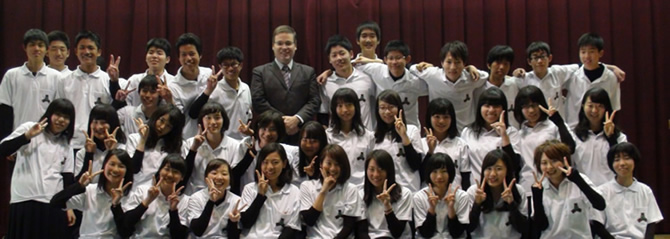
SGH students with Mr. Keith Lommel, Consul for Public Affairs and Director, Kansai American Center, who attended the session as a guest
Program and Presentation Topics
1. Opening
Opening speech by the principal; introduction of Management Guidance Committee members and guests
2. Presentation 1: Topics covered in the “Learning the Principles of Global Citizens” course taught by Shoji Nishimoto
Presentations by 17 students on applying to everyday problems the problem-solving analytical methods discussed in class.
- Team 1 “Problems pertaining to Sakai City’s trash sorting”
- Team 2 “Ideas for revitalizing the Giorno shopping center”
- Q&A session (instructors: Saburo Kawabuchi, Masahiro Fukuhara)
- Team 3 “Problems caused by illegal dumping”
- Team 4 “Exploring the possibilities of buses”
- Q&A session (instructors: Yukio Ikemoto, Shunji Nakao)
3. Presentation 2: Topics covered in the Marylhurst University “Sustainable Business and the Environment” course
Presentations by 23 students on work conducted in preparation for fieldwork in Portland.
- Team 5 “City Planning and Development”
- Team 6 “Forest Conservation”
- Team 7 “Solar Power”
- Q&A session
- Team 8 “Hydroelectric Power”
- Team 9 “Green Buildings”
Q&A session (instructors: Management Guidance Committee members)
4. Remarks and talk by Mr. Keith Lommel, Consul for Public Affairs and Director, Kansai American Center
5. Run-through of Mikunigaoka High School’s SGH curriculum for AY2015 by Kazuyo Tanaka, SGH Director
6. Award ceremony and closing
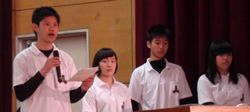 |
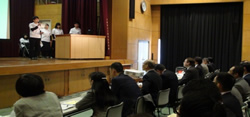 |
The year-end SGH presentations were held about three months after the mid-term SGH presentations in November. Although intended for 2nd-year students, the presentations were given by 1st years since the SGH program is in its inaugural year and has no 2nd-year students yet.
The students had conducted PEST and SWOT analyses, but had not been able to deepen their studies to include thorough investigations into the logical framework (cause-effect) due to the limited time they had following the session in November to review their work to date, decide on a new topic, and conduct in-depth research. However, this time all of the participants were able to try their hands at employing the logical framework analytical method, unlike in November, when only two teams had managed to attempt this, with the rest managing only summaries of what they had learned. Progress was also evident in that some teams on their own initiative visited companies and municipal government offices for interviews. The presentations this time took place at the main school auditorium, and the students, though daunted, delivered their presentations admirably while also operating slides. Some of the remarks by Management Guidance Committee members pointed out scope for improvement, but it is heartening that many students expressed desire to make further improvements by learning from the experience and shortcomings of this session. Because I always remind students not to worry about making mistakes but always learn from them in order to make progress, it is rewarding to see students taking my advice to heart, and being motivated. It is none other than experiences like this that lead to the kind of resilience required of global leaders.
This inaugural batch of SGH students will make their next presentations in February 2016 (the second batch, entering in April 2015, will make their first presentations in November). They will travel to Portland (United States) in March, and Manila (the Philippines) in August for fieldwork, spending a year working on their BOP business plans. We look forward to greater progress resulting in wonderful presentations in one year’s time.
We wish to take this opportunity to sincerely thank the many people who travelled from various parts of the country to attend this presentation session, and give warm words of encouragement. We look forward to your continued input and guidance.
Photo Gallery
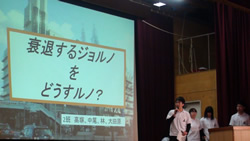 |
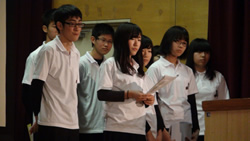 |
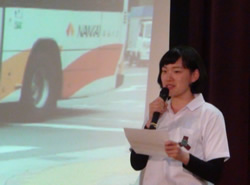 |
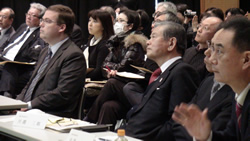 |
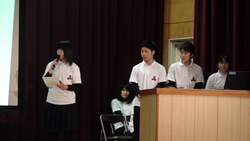 |
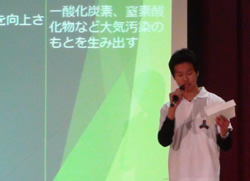 |
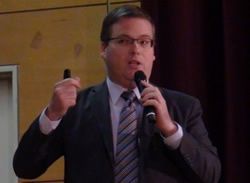 |
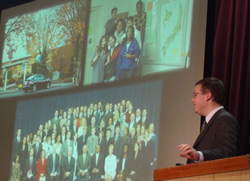 |
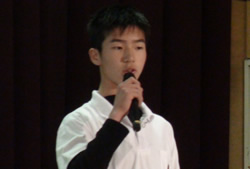 |
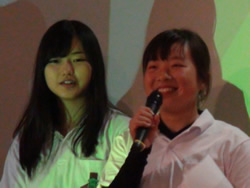 |
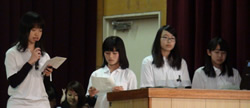 |
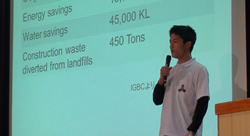 |
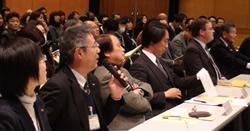 |
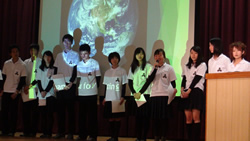 |
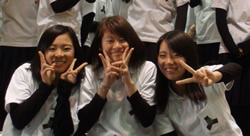 |
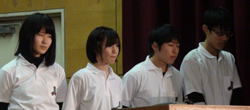 |
Thank you!
Super Global High School (SGH) Activity Report
December 15, 2014
December 2014 SGH Special Lectures
A very active program of SGH Special Lectures was held in December.
1. Issues and Challenges pertaining to Development in a Global Society (Monday, December 15, 2014)
Lecturer: Kyo Naka, Deputy Chief, North East Asia and Mekong Division, United Nations Development Programme (UNDP) Regional Bureau for Asia and the Pacific
 |
 |
The SGH Special Lecture was delivered by Naka-sensei, who was temporarily back in Japan from his job at the United Nations Headquarters in New York. He discussed the activities of United Nations Development Programme, what “development” is, and the history of development, showing various data and using the format of a quiz covering contemporary world affairs and definitions of terms.
2. The Non-Profit Research Center IMEC, Belgium: What It Does, and Why It Is Successful (Monday, December 22, 2014)
Lecturer: Taishi Kubota, IMEC Representative in Japan
 |
 |
 Established in 1982, IMEC is a non-profit international research institute headquartered in Leuven, Belgium. It is funded by more than 500 of the world’s leading businesses. IMEC engages in the development of technologies for next-generation electronics, such as photolithography, solar cells, and organic electronics. Mikunigaoka became the first Japanese high school to invite a lecturer from IMEC. The lecture covered in detail how IMEC was established, why it has been successful, and what state-of-the-art technologies it is currently developing.
Established in 1982, IMEC is a non-profit international research institute headquartered in Leuven, Belgium. It is funded by more than 500 of the world’s leading businesses. IMEC engages in the development of technologies for next-generation electronics, such as photolithography, solar cells, and organic electronics. Mikunigaoka became the first Japanese high school to invite a lecturer from IMEC. The lecture covered in detail how IMEC was established, why it has been successful, and what state-of-the-art technologies it is currently developing.
Studying the case of IMEC can teach us many things. These include the potential of NPOs in performing technical development conventionally undertaken by corporations; the difference, as demonstrated by the way IMEC is operated, in organizational culture between IMEC and Japanese companies; the possible shapes of the future world, suggested by technologies currently under development, and many more. Inviting the class to ask questions, Kubota-sensei described by responding to the questions how IMEC is operated, and how transistors work, and also discussed semiconductors only the size of five atoms, and other current and latest technologies, presenting many photographs and data. The vision of the future glimpsed through these nuggets of information seemed to inspire marvel and awe in the students, which in this instance included SSH students as well because of the lecture’s significant relevance to science fields. The school hopes to create more opportunities for SSH and SGH students to study together.
3. Kyoto University Special Lecture “Global-Scale Radical Changes Internet Use Can Potentially Bring to Education” (Thursday, December 25, 2014)
Lecturers: Kita Hajime, Vice President, Institute for Liberal Arts and Science, Kyoto University; Toru Iiyoshi, Deputy Vice President for Education, Director and Professor, Center for the Promotion of Excellence in Higher Education, Kyoto University
 |
 |
The birth of the World Wide Web in 1990, and of Google in 1998 transformed the world. The future working life of SGH students—born the same year as Google—is unimaginable without the Internet. To explore the future possibilities of the  Internet, which has continued to evolve over the past 25 years while subjected to debates of all kinds, Iiyoshi-sensei gave a lecture in the morning on the subject of Open Education. To exchange views on what the advancement of Open Education can bring to the future, the class was first posed with a series of 4-answer questions. Students input their responses using “clickers” (remote transmitters), which enabled their responses to be tabulated into graphs showing how many votes each option received. After exchanging personal views on the question topics, students were asked the same questions again. It was interesting for the students to observe how listening to other opinions changed the outcome, shown by the graphs. According to Iiyoshi-sensei, “This demonstrates the essence of interactive learning. The Internet enables people the world over to learn from and help each other.” The lecture gave a tangible sense of the changes to come, not only in education but in numerous other aspects of society.
Internet, which has continued to evolve over the past 25 years while subjected to debates of all kinds, Iiyoshi-sensei gave a lecture in the morning on the subject of Open Education. To exchange views on what the advancement of Open Education can bring to the future, the class was first posed with a series of 4-answer questions. Students input their responses using “clickers” (remote transmitters), which enabled their responses to be tabulated into graphs showing how many votes each option received. After exchanging personal views on the question topics, students were asked the same questions again. It was interesting for the students to observe how listening to other opinions changed the outcome, shown by the graphs. According to Iiyoshi-sensei, “This demonstrates the essence of interactive learning. The Internet enables people the world over to learn from and help each other.” The lecture gave a tangible sense of the changes to come, not only in education but in numerous other aspects of society.
Kita-sensei led a workshop in the afternoon, themed on Design Thinking. Taking into consideration the flow of processes comprising “fieldwork,” “brainstorming,” “concept,” “solution” and “prototype-making and assessment,” students in teams worked on the processes of “concept” and “solution.” The model situation they worked on was, “There has been a major earthquake, causing Mikunigaoka students to temporarily lodge at the high school building. How can Open Education benefit this situation?” The class first envisaged the profile of the evacuee students, then considered how they might spend their 24 hours, and explored where Open Education might be utilized. Students learned through the workshop that in order for the practical utilization of any idea or technology, one needs to logically consider what is needed, based on observations and examinations from multiple angles.
 |
 |
 |
 |
 |
 |
During the lunch break students had the opportunity to tour the Kyoto University Design School’s “Yoshida Fab.” The facility, designed for graduate students to swiftly give shape to new ideas without being restricted by boundaries of academic discipline, was equipped with a stage and various machines, including a 3D printer. It was exciting to imagine the place giving birth to world-changing ideas.
 |
 |
Presentation made during Kyoto University Campus Guide (Saturday, December 13, 2014) “Our Challenges for the Future: Problems Facing Japan”
Kyoto University Campus Guide was held at Kyoto University for Global Leaders High Schools (GLHS) chosen by Osaka Prefectural Board of Education. Representing the ten high schools in the humanities area, three Mikunigaoka SGH students gave presentations in English during the Part 1 topic research presentations. The three students respectively made proposals pertaining to excess packaging, education in light of Japan’s public debt and tax issues, and balancing parenthood and careers.
 |
 |
Super Global High School (SGH) Activity Report
November 22, 2014
The AY2014 Mid-Term SGH Presentations were held !

Global leaders of the next generation are making pose for a photo with SGH Management Guidance Committee members, members of the Osaka Prefectural Board of Education, and SGH instructors.
Program and Presentation Topics
1. Opening [13:00]
Opening speech by the principal of Mikunigaoka High School; introduction of Mikunigaoka High School's SGH Management Guidance Committee members
2. Description of Mikunigaoka High School’s SGH curriculum for May through October, 2014
(By Kazuyo Tanaka, SGH Director)
3. Topics covered in classes taught by Shoji Nishimoto [13:15]
A. Panel discussion “Learning the Principles of Global Citizens”
- What is a state?
- Domestic versus foreign issues: What are universal standards?
- Why do principles matter?
- Logic and communication
- What is leadership?

 |
 |
One student responded by sharing his own experience. “Elementary and junior high school classmates used to accuse me of ‘showing off’ when I stated my opinions, but I decided not to mind too much about their heckling, because I believed in having my own views, no matter what.” (Loud applause from audience)
Quoting the aphorism, “Small birds (the mediocre) have no way of knowing the aspirations of large birds (the great),” often mentioned during his classes, Nishimoto-sensei had this to say: “The select few, which I dare call ‘the elite,’ have tasks and responsibilities set upon them. You must be duly aware of these tasks and responsibilities, and let them propel you to higher grounds.” We hope students take these words to heart, and study hard!
3. Topics covered in classes taught by Shoji Nishimoto [14:05]
B. Presentation on “Logical Framework”
1) What is the concept of “Logical Framework?” 2) Sample analyses employing Logical Framework
“Logical Framework” is a methodology for logically identifying the causes and effects of problems. The approach is used as a guideline by Asian Development Bank, where Nishimoto-sensei used to work before joining UNDP.
A team of three students opened the presentation by showing analytical methods employing the cause-effect tree, in particular the PEST analysis, which they explained using an analogy of traffic congestion. Another five students followed by explaining SWOT analysis, using Nintendo as a sample. SGH Management Guidance Committee member Masahiro Fukuhara (Founder and President, Institution for a Global Society) praised the presentation for the following three reasons:
- The presentation represented conscientious efforts on the part of students to employ the framework to analyze major international issues. Tackling such a challenge during the first year of high school would benefit the students’ future studies.
- Employing PEST and SWOT analyses has enabled students to examine issues from multiple angles. Everything students learn at school is related in one way or another to real-life politics, economy, culture, etc., and coursework such as this in particular forms part of the foundation that will enable students to objectively identify their areas of interest when it comes to choosing university and graduate school paths, decisions that otherwise tend to be colored by hensachi scores.
- Rather than just conducting the analyses, students have used the analyses to guide their fieldwork for next year, and make policy proposals.
 |
 |
Adding that, “Although what I am going to suggest is beyond what is normally required of first-year high school students, I will make the suggestions anyway because your presentations were exceptionally good,” Fukuhara-sensei also gave the following advice for taking the study further: “Overdependence on frameworks, and by extension abstract ideas, can cause one to overlook reality. I want you to explore all kinds of subjects employing your sensibility. For instance, ‘Design Thinking,’ practiced in the US, places firsthand experience as the initial step of a problem-solving process. When you conduct fieldwork, I want you to listen to what real people have to say, and begin your thinking process from there. I was impressed by the thorough-going research, which even included aspects to do with stock, conducted for the Nintendo presentation, but on the other hand, it is also true that the SWOT analysis has known weaknesses. I also want you to study the relationship with dynamism. Since your class is studying the definitions of a state, you might also consider researching the effects Nintendo has had on states and on the world.”
According to Fukuhara-sensei, some of the students who gave the presentation came to him afterwards to express their resolve: “We are not satisfied with our presentation today, and are determined to do better next time.” We look forward to their next presentations too!
4. Topics covered in the Marylhurst University Outreach Program [14:20]
1) Sustainable Business 1 “The Fundamentals of Business”
2) Sustainable Business 2 “The Lorax and Its Implications”
3) Sustainable Business 3 “Important Economic and Social Challenges Facing Japan”
The next series of presentations were based on the Outreach Program offered by Marylhurst University in Portland, Oregon, United States. The Marylhurst Outreach Program constitutes another major pillar of the first-year curriculum, and brings the Sustainable Business lectures delivered at Marylhurst to Mikunigaoka High School, with some adjustments. Sustainable Business covers the fundamentals of business, corporate ethics, and other aspects that define a sustainable business that cares for the environment. The first student team delivered a presentation on the fundamentals of business. The next team gave a presentation on lessons that can be drawn from the movie The Lorax. The final team gave a presentation on issues facing Japan, which the students had become aware of after starting to take the SGH lectures.
 |
 |
 |
 |
SGH Management Guidance Committee member and former high-school principal Shunji Nakao (Admissions Officer, Kinki University) commended the presentations as follows: “As someone who has served as principal of a high school with emphasis on English education, I was genuinely impressed by the confident, accomplished delivery of the presentations, given that the speakers are only in their first year of high school, and just six months into the SGH program. The presentations gave a good indication of the effectiveness of courses taught by Marylhurst faculty in improving student English skills.” Course instructor Mr. Brian Shaw also commented very positively on the presentations.
Below are some of the student responses to the question, “What do you enjoy most about the SGH lectures?”
“I appreciate the privilege of experiencing university-level learning content while still in the first year of high school. The weekly SGH lectures provide opportunities for us to acquire a wide range of new knowledge, which I look forward to continue doing.”
“I very much enjoy examining, from a totally unexpected perspective, the society we live in every day.”
“Nishimoto-sensei’s classes cover topics we had never been aware of, and I am not sure if I have managed to grasp everything, but learning new words and other knowledge over the past six months has been a very exciting experience. The classes have taken our thinking to a more advanced level, so to speak. For example, I just did a presentation on gender issues, which I was never conscious of before, whereas now I could even delve into the philosophy of the subject. I also enjoy the many personal episodes Nishimoto-sensei shares with us during classes. The Marylhurst classes are quite tough since they are delivered entirely in English, but I relish the opportunity of learning in English the kind of business knowledge that would become indispensable if and when we embark on global careers. Actually, the SGH classes are the only things I look forward to since being admitted to Mikunigaoka.” (Loud laughter from audience)
5. Description of Mikunigaoka High School’s upcoming SGH curriculum [14:45]
(By Kazuyo Tanaka, SGH Director)
6. General comments by SGH Management Guidance Committee members [14:50]
7. Closing [15:05]
As SGH Director, there is nothing more rewarding than occasions like today, when we are made aware of students’ progress. Throughout the six months of study covering many topics, I have always been happily surprised by the way students respond to and express enjoyment in taking the classes—indications that the program has gotten off to a good start, which is a relief to me.
I have always told students to commit wholeheartedly to whatever they do, and make lots of mistakes, which always teach them something. (By the way, the four students who took on the challenge of chairing today’s sessions demonstrated great commitment. I think they did an excellent job running the sessions with admirable spontaneity.) The presentations were delivered with confidence not typically found in first years—so much so that I almost yearned for the occasional hiccup! Despite the numerous compliments from instructors, however, a lot of the students were less than satisfied with their performances, leaving comments such as, “I was very nervous and couldn’t deliver very smoothly,” or “I want to do better next time,” which in a way is encouraging, because it is an indication of their unfulfilled potential. I look forward to continue helping them in their efforts to grow into future global leaders by finding ways of stimulating their intellectual curiosity.
Last but not least, I wish to deeply thank the many high school teachers and other educational practitioners from many parts of the country for their time today and words of encouragement. I also wish to take this opportunity to thank the many parents who attended. All of us involved look forward to your suggestions and your continued support toward our efforts to build an even better curriculum.
The AY2014 Year-end SGH Presentations to wrap up the academic year are scheduled to take place at this school in the afternoon of Saturday, February 14, 2015, which I hope many of you will attend as well. (Details will be announced on the school website as and when available.)

Students formed a circle prior to giving their presentations. Being inaugural SGH students without recourse to precedents has meant that the students have had to be inventive and creative in many respects. The matching T-shirts were gifts from Nishimoto-sensei and former Mikunigaoka High School principal Tanaka-sensei. The SGH logo original to Mikunigaoka High School resembles the red disk of the Japanese flag, suggesting the national hope carried by these young people.
Scenes from the AY2014 Mikunigaoka High School Mid-Term SGH Presentations
 |
 |
 |
 |
 |
 |
 |
 |
 |
 |
 |
 |
 |
 |
 |
 |
 |
 |
Thank you!
Super Global High School (SGH) Activity Report
Septenber 5
Summer Holiday Assignment
Students were assigned two tasks by SGH over the summer break:
1. Read The Affluent Society by John Kenneth Galbraith
2. Do some research on NPOs
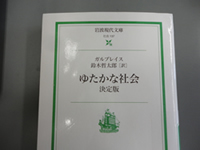
Special Lecture: NPOs and NGOs
Prof. Keiko Nishino, Kwansei Gakuin University
If in the future you were to start some kind of venture, what format would you choose? Setting up a company is one of the more obvious choices, but there 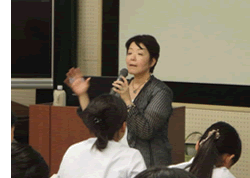 is also the option of starting an NPO. Imec, a Belgian research center known for the development of cutting-edge semiconductors and nanotechnology, and Médecins Sans Frontières [Doctors Without Borders], increasingly in the spotlight for their role in the fight against Ebola, are examples of NPOs. Although NPOs are relatively new to Japan, their roles are expected to grow. To learn what NPOs are, and how they work, we invited Professor Keiko Nishino from Kwansei Gakuin University for a special lecture. A leading expert on NPOs, Prof. Nishino has worked for UNICEF, and has been responsible for the establishment and operation of NPOs and corporations in the field of international cooperation.
is also the option of starting an NPO. Imec, a Belgian research center known for the development of cutting-edge semiconductors and nanotechnology, and Médecins Sans Frontières [Doctors Without Borders], increasingly in the spotlight for their role in the fight against Ebola, are examples of NPOs. Although NPOs are relatively new to Japan, their roles are expected to grow. To learn what NPOs are, and how they work, we invited Professor Keiko Nishino from Kwansei Gakuin University for a special lecture. A leading expert on NPOs, Prof. Nishino has worked for UNICEF, and has been responsible for the establishment and operation of NPOs and corporations in the field of international cooperation.
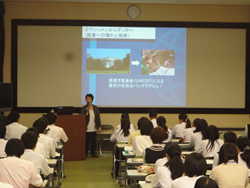 |
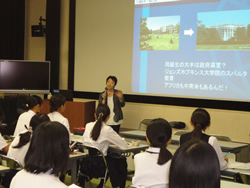 |
Super Global High School (SGH) Activity Report
July 10,16
Special Lectures: Learning the World’s Leading Practices
1. Review of and Strategies for Osaka Tourism
Kunio Kano, Executive Director, Osaka Government Tourism Bureau
End-of-term exams are over, and the Sankyu Seminar has started. A program unique to Mikunigaoka High School, the Sankyu Seminar is a series of lectures delivered by leading practitioners in various fields for the purpose of furthering student knowledge.
As part of the SGH curriculum, we invited two speakers. One was Mr. Kunio Kano, Executive Director of the Osaka Government Tourism Bureau. Since being appointed to his current position in 2013, Mr. Kano has been busily engaged in the promotion of tourism in Osaka and Japan, with successful results. In his lecture, Mr. Kano shared his experience of spending his youth in the United States, and of switching jobs, and also described in detail actual tourism strategies that Osaka employs. The topics, such as setting goals and working toward them, solving problems by examining matters from multiple angles, and devising detailed strategies, apparently proved very informative for students, not least because they were grounded in real-life experience.
During the very active Q&A session, students asked many questions of the speaker, who has enjoyed an active career in diverse fields, including as Managing Director and Deputy Branch Manager of Manufacturers Hanover Securities Company, Japan, whose parent company is a major Wall Street player; as President and Representative Director of Royal Doulton Dodwell KK, Japan; as Regional Director for North Asia at the Hong Kong Tourism Board; and as Executive Director of the Osaka Government Tourism Bureau. “What does it take to be head-hunted?” “How did you respond to the drop in visitors to Hong Kong following the SARS outbreak?” Mr. Kano’s answers to such questions seemed to embody the very qualities essential for global leaders, such as being a well-balanced fast learner capable of immediately understanding what the other party wants, and with the capacity to patiently and effectively solve issues. He also introduced students to performances of the Asian Youth Orchestra, reminding us that familiarity with the arts, such as music and visual arts, as well as sports, is another must for global leaders. On the whole it was a very informative lecture.
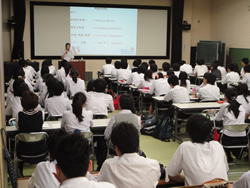 |
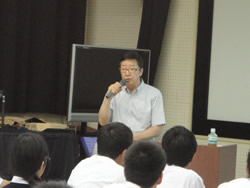 |
2. How to Become Global Leaders: a Lecture about Japan in the World and about imec
Mototsugu Ogura, Institute of Scientific and Industrial Research, Osaka University
The other SGH special lecturer was Mr. Mototsugu Ogura, Specially Appointed Professor, Institute of Scientific and Industrial Research at Osaka University. Mr. Ogura enjoyed a long engineering career at Panasonic, during which he built a close relationship with imec, a world-leading research institute in Belgium. He is currently General Manager of COI Planning Office for the joint research project between Osaka University and imec. Titled “Development of ‘SUPER NIPPON-JIN’ with human abilities activation and promotion of industrial competitiveness/construction of a prosperous society,” the project was adopted as a Center of Innovation Science and Technology-based Radical Innovation and Entrepreneurship Program (COI STREAM) by the Japanese Ministry of Education, Culture, Sports, Science and Technology (MEXT).
Mr. Ogura, who travels extensively within and outside Japan for his work, which involves not only imec but Stanford University and Kanazawa University, among others, discussed a wide range of topics, including Japan’s position in the world, what is and isn’t matter-of-course in Europe, and a general description of imec, providing students with an opportunity to learn about some of the perspectives required of global leaders.
Students were also inspired to work harder on their English grammar by Mr. Ogura’s argument that English grammar must be mastered during one’s youth: “Although some of you may think that English language study for university entrance exams won’t be of any practical use, jobs like ours involve a lot of English writing. It may perhaps be possible to acquire passable spoken English later in life, but mastering grammar is tough unless you’re young. I strongly advise you to master grammar while you can.” Work hard, students!
During the Q&A session, students actively raised questions, including ones concerning expressions—such as “white countries”—not normally encountered by high school students. There was also an explanation about the aforementioned joint project between Osaka University and imec. Imec is an NPO funded by over 600 companies all over the world. SGH hopes that the lecture provided hints for appreciating the roles and possibilities of NPOs, the topic for this year’s summer holiday project. SGH also hopes that someday a Mikunigaoka graduate will go on to pursue his or her career at imec, working side-by-side with researchers from around the world.
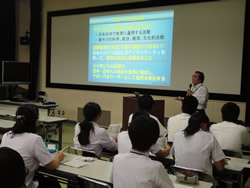 |
 |
Super Global High School (SGH) Activity Report
July 17
Mikunigaoka Welcomes Students from Gyeongsan High School, Republic of Korea
Students from Gyeongsan High School in Daegu, South Korea visited Mikunigaoka High School. After a tour of the school buildings, the Gyeongsan students were introduced to some of Japan’s cultural traditions through naginata demonstrations by the naginata club, and a tea ceremony hosted by the sado club.
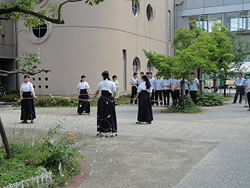 |
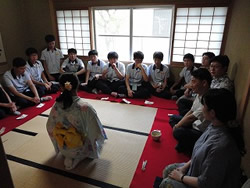 |
Students from both schools then gave presentations in English to introduce one another. Gyeongsan High School gave a presentation about South Korea, Daegu City and Gyeongsan High School, and Mikunigaoka High School likewise gave a speech about Sakai City, the high school and its SGH program. The Gyeongsan students spoke very fluent English, and were very well-researched on Japan, which resulted in a wonderful presentation that greatly inspired the Mikunigaoka High School students.
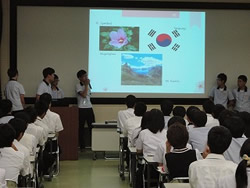 |
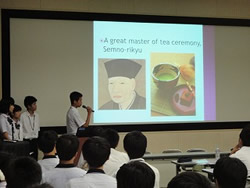 |
The rest of the time students enjoyed free conversation and exchange. Hope to see you again soon!
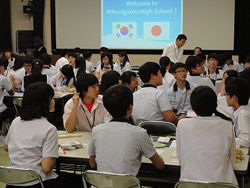 |
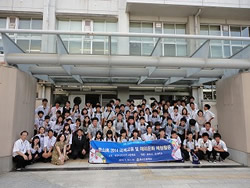 |
Super Global High School (SGH) Activity Report
June 11
Lecture series by Marylhurst University on “Sustainable Business and the Environment” Begins at Mikunigaoka
Marylhurst University is a private Catholic university based in Portland, Oregon in the United States. The academically distinguished university has consecutively made it to the “Best Universities – Master’s (Western Region)” category of the U.S. News & World Report’s best college rankings.
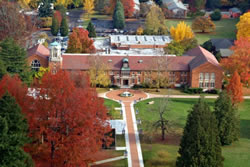 |
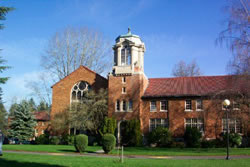 |
Mikunigaoka High School has partnered with Marylhurst University to bring to Mikunigaoka High School the “Sustainable Business” lectures offered at Marylhurst. Adapted for Mikunigaoka students, the lectures are delivered entirely in English by two Marylhurst lecturers.
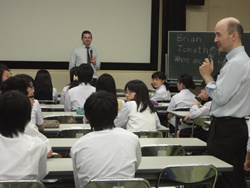 |
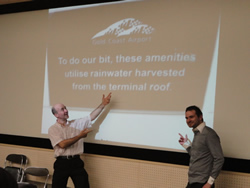 |
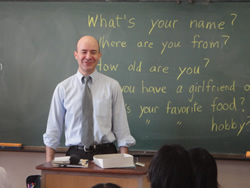 |
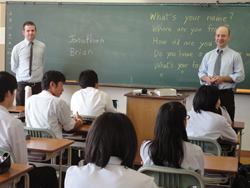 |
After discussing in English various topics such as, “At which point is the value of things determined,” “What is the difference between making products and offering services,” and “Is education a form of business” a first-year student asked, “What is economics?”—a very good question indeed! We want students to listen to, speak, understand and ask many questions in English, so as to improve their command of English. We believe a positive attitude and sustained engagement will lead to significant progress by the time students graduate.
May 20
“Learning the Principles of Global Citizens” begins
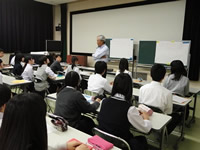
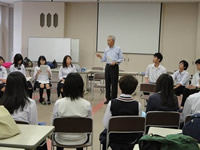
May 13
SGH course starts [Ice Breaking Workshop]
